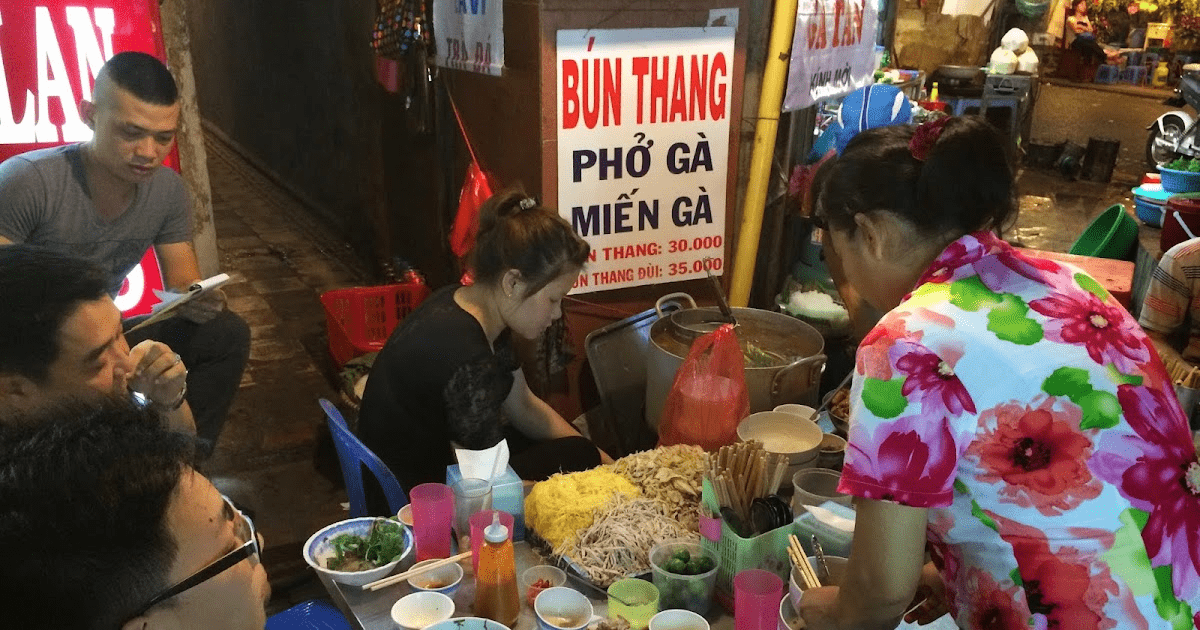Bún Thang (Vietnamese Layered Chicken Noodle Soup)
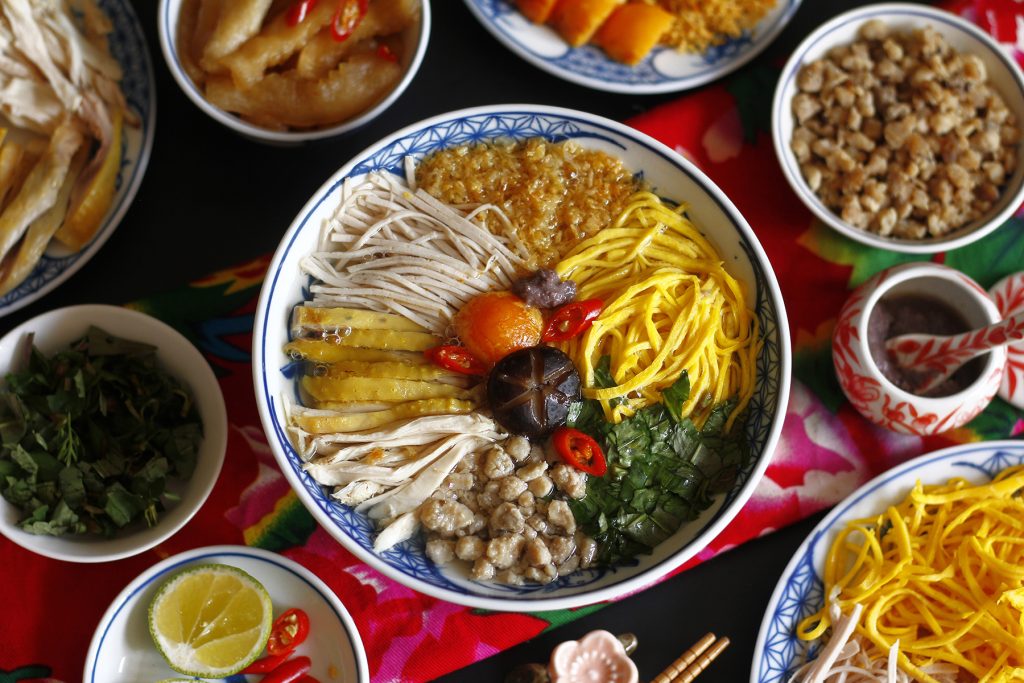
Ingredients
Broth Base
- 1.5kg pork bones (cleaned and blanched)
- 1 whole free-range chicken (~1.5kg)
- 50g dried shrimp
- 50g dried radish, soaked
- 2 onions
- 5 shallots
- 10g ginger, smashed
Toppings
- 300g giò lụa, julienned
- 3 eggs, beaten and pan-fried into thin crepes, then sliced
- 20 shiitake mushrooms, soaked and sliced
- Cooked chicken, shredded
- Accompaniments
- Fresh rice vermicelli
- Rau răm (Vietnamese coriander)
- Scallions, chopped
- 1 lime
- 1 red chili
- Condiments & Seasonings
- Fish sauce, shrimp paste (mắm tôm), vinegar, salt, sugar, cooking oil
Nutritional Information
For: Meat eaters (not suitable for vegetarians)
Calories per serving: ~400–450 kcal (per full bowl)
Key Nutrients
1. Lean Protein (25–30g)
- Source: Chicken, pork bones, egg, Vietnamese pork sausage (giò lụa), shrimp
- Benefits: Supports muscle growth, immune function, and tissue repair.
2. Collagen & Minerals
- Source: Pork bone broth
- Benefits: Supports joint health, skin elasticity, and provides calcium, magnesium, and phosphorus.
3. Healthy Fats (8–10g)
- Source: Egg yolk, pork sausage bone marrow
- Benefits: Aids absorption of fat-soluble vitamins and provides long-lasting energy.
4. Complex Carbs (40–50g)
- Source: Rice vermicelli (bún), dried radish
- Benefits: Provides sustained energy and keeps you full.
5. Antioxidants & Phytochemicals
-
Quercetin (onion): Anti-inflammatory and immune-boosting
-
Gingerol (ginger): Aids digestion and reduces nausea
-
Capsaicin (chili): Supports circulation and metabolism
-
Allicin (garlic + shallots): Promotes cardiovascular health
6. Essential Micronutrients
-
Iron (from egg, pork sausage): Supports red blood cell production
-
Vitamin B12 (from chicken): Supports brain function and energy
-
Iodine (from shrimp, fish sauce): Maintains thyroid health
1. Ingredient Preparation
-
Chicken: Rinse the chicken thoroughly with salt, removing all clotted blood inside.
-
Pork bones: Wash the pork bones with salt, then blanch in boiling water for 3 minutes to remove impurities. Rinse again under cold water.
-
Dried shrimp: Rinse and soak in water for 1 hour until softened.
-
Dried radish: Soak for 4–5 hours until rehydrated. Drain, squeeze out excess water, and cut into thin strips.
-
Dried shiitake mushrooms: Soak until soft, then rinse and drain.
-
Aromatics: Peel and clean the shallots and onion. Peel and mince the ginger. Mince the chili. Rinse and finely chop the scallions and Vietnamese coriander (rau răm). Cut the lime into small wedges.
2. Broth Preparation
In a large pot, combine:
-
Pork bones
-
Whole chicken
-
2/3 of the dried shrimp
-
Shallots
-
Onion
-
Shiitake mushrooms
-
2 teaspoons of salt
-
4.5 liters of cold water
Bring the pot to a boil over high heat.
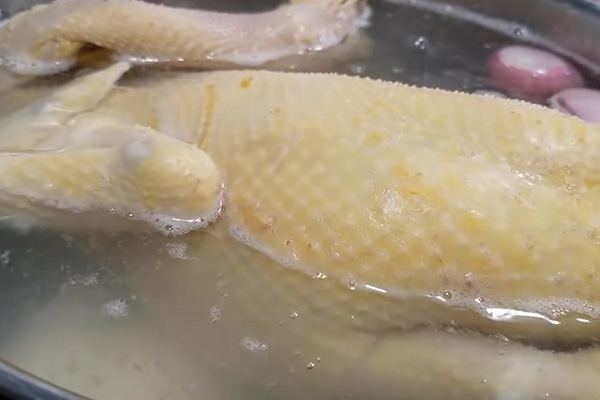
Once boiling, lower the heat to maintain a gentle simmer and skim off any foam. After simmering for 45 minutes, remove the chicken, soak it briefly in cold water to cool, then debone and slice the meat. Return the bones to the pot for a richer broth.
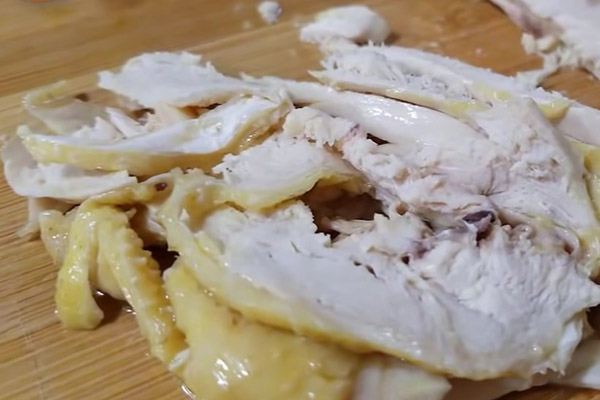
Continue simmering the broth for 2 more hours. Add the mushrooms back in and season with 2 tablespoons of seasoning powder. Simmer for another 30 minutes, then add 2 tablespoons of fish sauce. Stir well and turn off the heat.
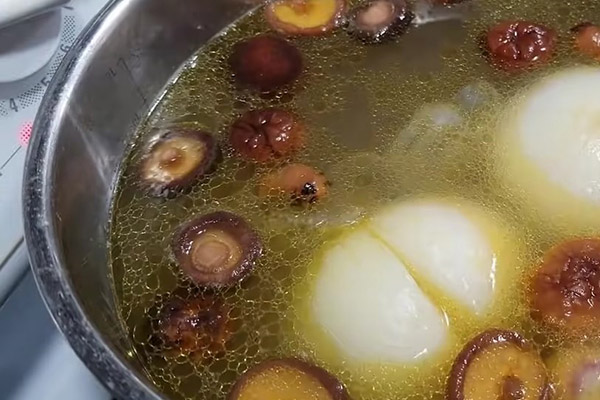
3. Pickled Radish Topping
In a bowl, mix:
-
3 teaspoons of fish sauce
-
3 teaspoons of sugar
-
2 teaspoons of vinegar
Stir until the sugar dissolves, then pour the mixture over the radish. Mix well, then add a bit of minced ginger and chili. Toss evenly and let it marinate.
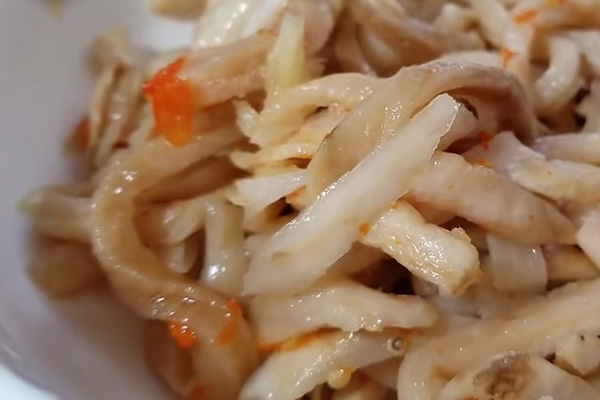
4. Egg Preparation
- Crack the eggs into a bowl, add a pinch of salt, and beat well.
- Heat a pan and lightly grease it with a teaspoon of oil, then wipe away excess oil with a paper towel. Pour in a small ladle of egg mixture and swirl to form a thin crepe-like layer. Once set, flip briefly and remove from heat. Repeat until all the egg is used.
- Cut the cooked egg sheets into thin strips.
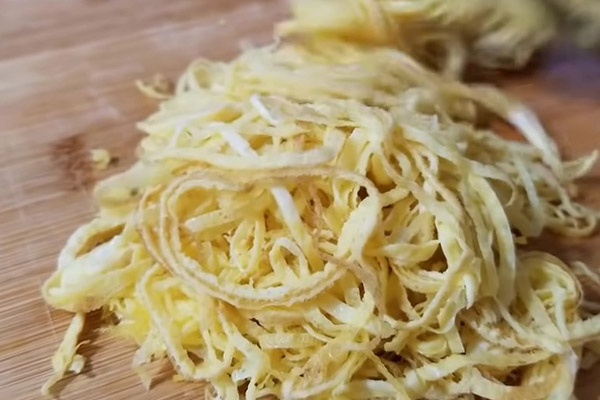
T
5. Dried Shrimp Floss
Grind the remaining 1/3 of the dried shrimp until fine. Toast it in a dry pan over medium heat until dry and fragrant. Turn off the heat.
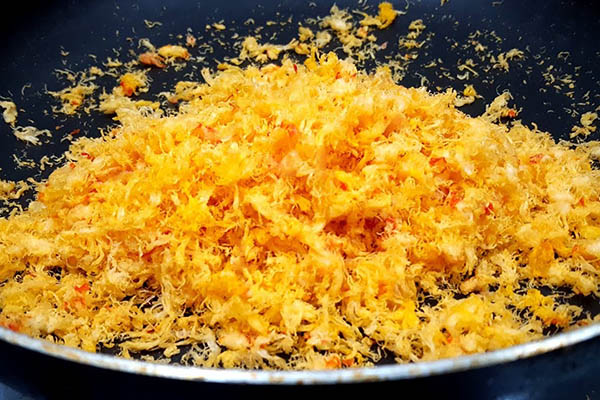
6. Vietnamese Pork Sausage (Giò Lụa)
Cut the giò lụa into very thin slices, then julienne into strips.
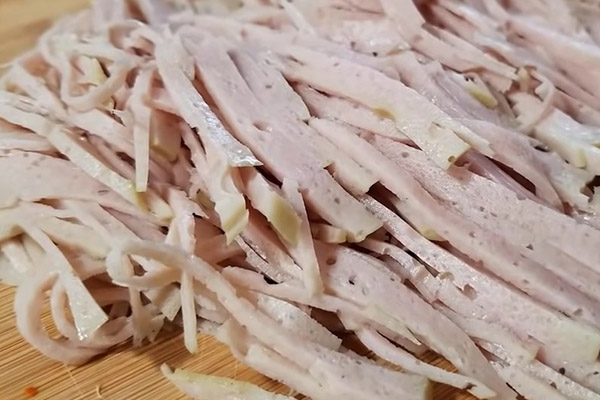
7. Final Product
- Place a portion of cooked vermicelli noodles into a bowl. Neatly arrange the sliced chicken, shredded giò lụa, scallions, and Vietnamese coriander around the edges. Place the shrimp floss in the center. Pour hot broth with mushrooms over the ingredients.
- To enjoy, add a bit of fermented shrimp paste (mắm tôm) and a squeeze of lime. Don’t forget the pickled radish for an extra burst of flavor.
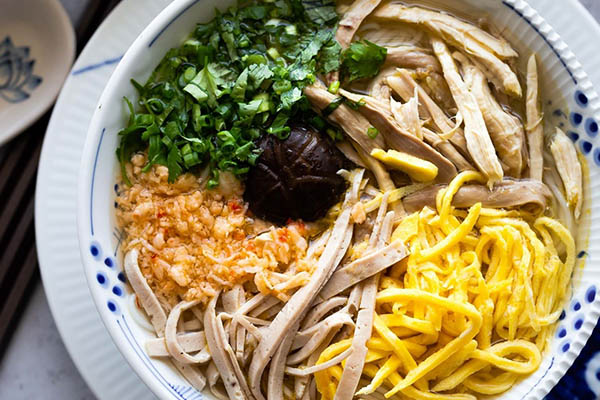
Among the many treasures of Vietnamese cuisine, bún thang stands out not for its boldness, but for its quiet elegance. It is a dish that whispers — of time, care, and an old Hà Nội that once prized restraint over indulgence.
From Leftovers to Legacy
The origins of Layered Chicken Noodle Soup trace back to the heart of ancient Hà Nội, particularly during the Lê and Nguyễn dynasties, when culinary refinement was considered a mark of cultured living. After grand Lunar New Year feasts, Hà Nội women — often from educated or artisan families — found themselves with leftover ingredients: poached chicken, Vietnamese pork sausage, dried shrimp, and eggs.
Instead of letting them go to waste, they transformed them into a dish that embodied the ideals of balance, frugality, and grace. The result was Layered Chicken Noodle Soup, named after “thang thuốc” — a traditional medicinal broth — for its complexity and therapeutic qualities.
A Bowl That Reflects Hà Nội’s Soul
In many ways, Layered Chicken Noodle Soup is the culinary mirror of Hà Nội’s personality: soft-spoken yet intelligent, modest yet artful. Every component is treated with meticulous attention. Eggs are beaten with a pinch of salt and cooked into golden crepes, then sliced into fine threads. Pork sausage is cut into perfect strips, shrimp is pounded and sautéed until dry and fragrant. The broth — a clear, golden consommé — is simmered from pork bones, chicken, onions, mushrooms, and dried shrimp over several hours.
What makes Layered Chicken Noodle Soup unique is its layered assembly, often compared to the way Hà Nội layers its culture — carefully, patiently, and never carelessly loud. Toppings are arranged in a circle, like a flower in full bloom. At the center lies the shrimp floss, surrounded by the yellow egg, white chicken, pale pork sausage, and flecks of green herbs.


(Delicious Vietnamese Layered Chicken Noodle Soup)
Philosophy in a Bowl
Unlike fiery southern dishes or rustic northern countryside meals, bún thang carries a certain urban serenity — a reflection of Confucian values: harmony (hòa), moderation (trung dung), and beauty through order. It is not just food, but a quiet ritual — often enjoyed in the calm of early morning, with the clink of porcelain spoons and the scent of lime and fermented shrimp paste rising with the steam.
Today, Layered Chicken Noodle Soup remains a symbol of Hà Nội’s culinary heritage, though it is increasingly rare to find a version made with the same level of care. In a fast-paced world, the dish reminds us of a slower time, when people cooked not just to eat, but to honor memory, season, and sensibility.
To eat Layered Chicken Noodle Soup is to pause and remember that beauty — true beauty — often lies in the smallest, quietest details.


(Traditional Vietnamese Layered Chicken Noodle Soup Stall)
Our choices
Mrs. Tống’s Layered Chicken Noodle Soup
56 Ngô Sỹ Liên, Văn Miếu – Quốc Tử Giám, Đống Đa, Hà Nội, Vietnam
